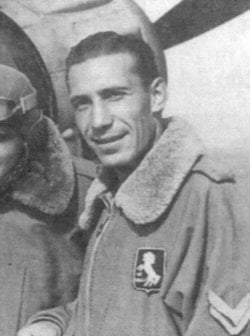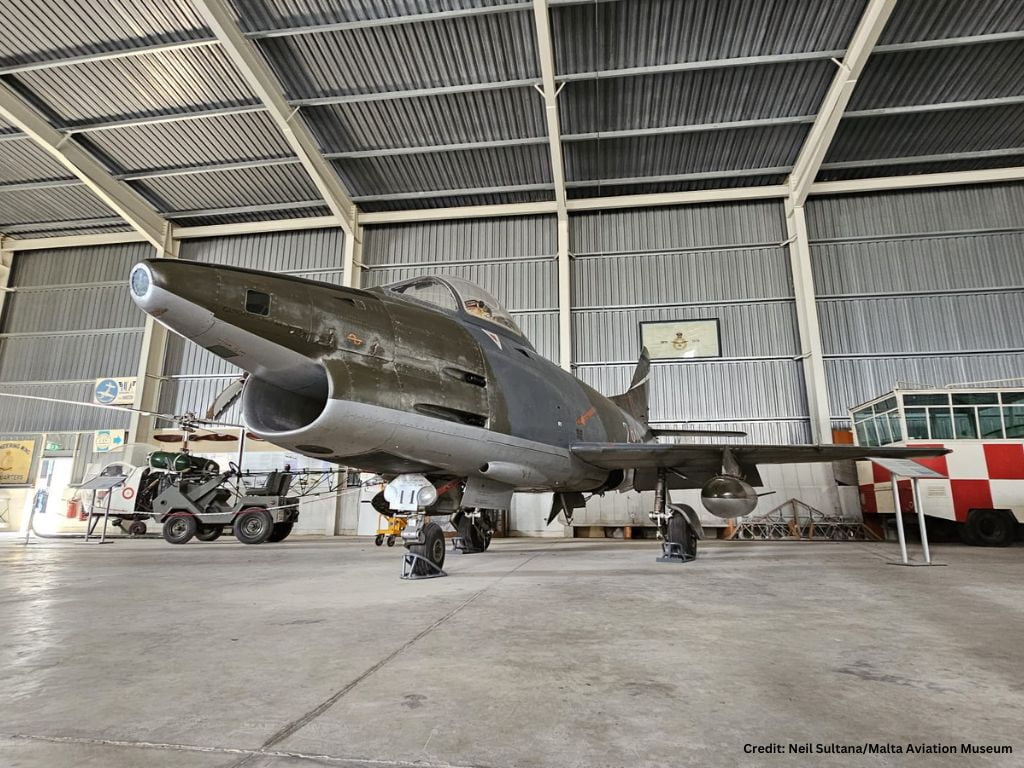By Charles Stafrace
Airmen’s mess songs are famous in the Royal Air Force, more so in wartime where the mess was the only place where the young crews could release the pressure of operations with beer, song and frolic. The existence of so many mess songs had never occurred to me until one Sunday morning of a few years ago, while rummaging in a box during a charity car boot sale, I came across an old second-hand book, 1945 vintage, called The Airman’s Song Book, an anthology compiled by Sylvan Press.
Belonging to that fraternity of aviation buffs to whom anything that has to do with aircraft is interesting – and considering the cheap price asked – I bought the book right away. Back home I delved through it and discovered a mess song sung by Hurricane-equipped N° 605 Squadron at Hal Far, Luqa and Ta’Qali between November 1941 and February 1942.
It is described by the author as a typical squadron song, letting off steam in every line and exploding in all directions conveying beautifully the spirit of RAF on operations. In the lenghty forward to the book the author has given a description of RAF mess songs and his words seem to come so deeply from the heart that I found it impossible to translate into my own words.
I am therefore quoting verbatim a particular paragraph that I found most intriguing and which is very relevant to the Malta Song:
“It almost goes without saying that the original versions of a large number of airmen’s songs are as full of swear words as there are sultanas in a piece of Dundee Cake. Especially is this so of squadron songs, most of which are written under operational conditions; concert party songs are the only group to which it does not apply at all. It is equally obvious that the expletives are relished by the singing airman as mush as the schoolboy delights in the sultanas. No doubt many old sweats will cry tears when they glance over the versions here printed and taste the cack-handed cooking through which many of them have passed to fit them for publication. Yet I had no alternative but to euphemise where it was necessary, knowing full well that my editing would be ignored when singing in appropriate company, and the original styles replaced in all their fruity glory.”
In the following song, as any level-headed reader will guess, the word “binding” used repeatedly in each stanza has been euphemised for a popular but unprintable word. It is this word that helped the young crews who had aged prematurely by the strain of war, but whose faces had yet to show signs of a stubble, to discharge their pressures of battle. For reasons of decency I will obviously leave it to the imagination of the reader to guess what the original word should most appropriately be:
We’re flying binding Hurricanes/ With binding long range tanks/ We do some aerobatics/ But we get no binding thanks/ But when we’re coming home again/ We meet the binding Hun/ We press the binding button/ It don’t fire the binding gun
Chorus:
Ain’t they binding lovely aircraft?
Ain’t they binding lovely aircraft?
Ain’t they binding lovely aircraft?
We press the binding button.
It won’t fire the binding gun.
We’re flying binding Wimpeys/ For miles and miles and miles/ It’s not the ruddy distance, boys/ But by Gort! my binding piles!/ When we’re coming home again/ At half-past binding six/ We prop our binding eyelids/ With sixteen binding sticks.
Aint they lovely aircraft?
We prop our binding eyelids
With sixteen binding sticks.
We’re flying binding Albacores/ At ninety-seven knots/ The engine’s cutting out and Rattling off in binding spots/ We saw Castel Benito/ and dropped our binding bombs/ We made our binding landfall in a place called binding Homs/
Aint they lovely aircraft?
We made our binding landfall
In a place called binding Homs
We’re flying binding Blenheims/ At masthead binding height/ Just to give the enemy/ A dirty binding fright/ And when we’re coming home again/ We give a binding whoop/ We gun our binding motors/ And we do a binding loop/
Aint they lovely aircraft?
We gun our binding motors
And we do a binding loop
We’re flying binding Ansons/At 500 binding feet/ We fly them in the rain, the snow/ And in the binding sleet/ And when we’re flying south we find/We’re flying binding north/ And we make our binding landfall/ In the fifth of binding forth/
Aint they lovely aircraft?
And we make our binding landfall
In the fifth of binding forth
We’re flying binding Bostons/ At 250 binding feet/ Doing night intruders/ Just to see who we might meet/ And when the daylight dawns again/ And we can take a peek/ We find we’ve made our landfall/ Up the Clacton binding Creek/
Aint they lovely aircraft?
We find we’ve made our landfall
Up the Clacton binding Creek
We’re flying binding Whitleys/ At 90 miles per hour/ Browned-off binding pilots/ Feeling kinda sour/ But the tail-end binding Charlie/ Thinks it’s all a binding treat/ To shoot the binding Hun/ Say he, is easy binding meat/
Aint they lovely aircraft?
To shoot the binding Hun
Say he, is easy binding meat
The printing stops there but whoever owned the book before me, who knows how many years ago, added a stanza in his own handwriting in pencil. He must have sung it himself and seems to be updating it with additional wording which the author of the book may have not been aware of. I am reproducing this hereunder, again replacing the problem word with “binding“:
The Flying binding Fortress/ Flies all 40,000 feet/ The weather binding awful/ Binding rain and binding sleet/ We’ve bags and bags of ammo/ And our teeny weeny bomb/ And we drop it from so binding high/ We can’t see where it’s gone/
For music minded readers, the song was sung to the tune of “John Brown’s Body”.
N 605 Squadron, together with N 242 and 258 Squadrons, flew off HMS Argus and Ark Royal to Malta on 12 November 1941. The ground crews proceeded to the Far East where new squadrons were formed with the same numbers. Thus for a short time both units appeared to be operating in two theatres of war separated by thousand of miles. On Malta N 605’s Hurricanes were serviced by groundcrews of N 185 and 249 Squadrons. The unit was based at Hal Far and later at Luqa on air defence duties, disbanding at Ta’Qali on 18 March 1942, its pilots joining N 185 Squadron.
On its arrival in Malta from onboard the two carries, N 605 Squadron consisted of the following pilots:
Sqn.Ldr. R Reid
Flt.Lt. S R Bird
Plt.Off P W Lowe
Plt.Off P Wigley
Plt.Off I MacKay, RCAF
Plt.Off R F Noble
Plt.Off G Allen
Plt.Off O O Ormrod
Plt.Off J Beckitt
Plt.Off H C Lester, RAAF
Plt.Off D J Howe
Sgt. A S Wilson, RNZAF
Sgt. J W S Fletcher, RCAF
Sgt. D J Robb, RNZAF
Sgt. C V Finlay
Sgt A Howell
For the record, N° 605 Squadron was the last RAF unit to be delivered on board of the Ark Royal. Next day a German submarine sank this famous warship.




